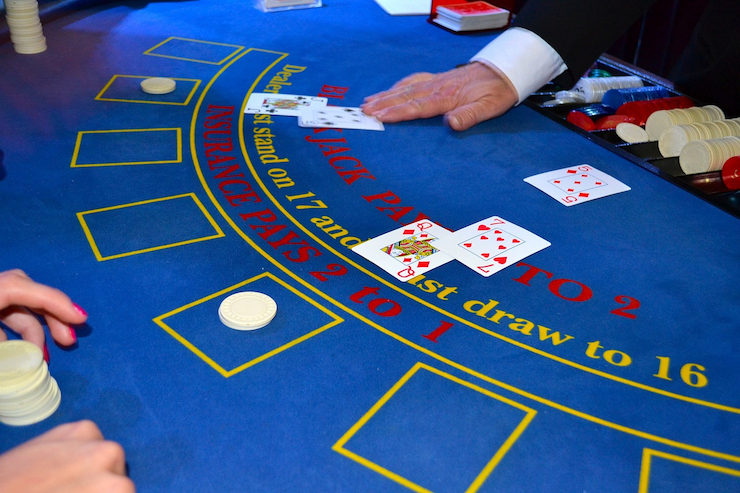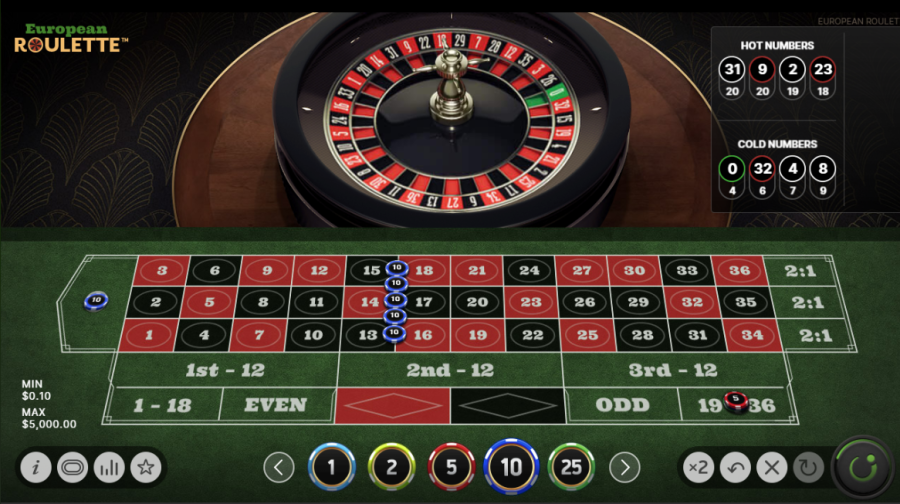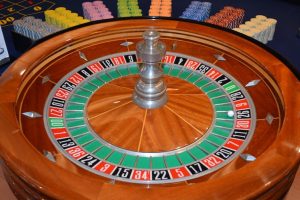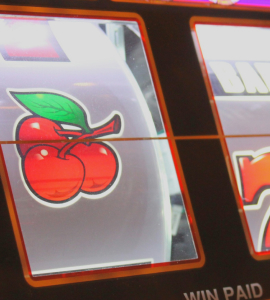Whether you’re a sports bettor or an online casino player, there are plenty of betting systems available. Such systems are designed to introduce logic and order into how you construct wagers. This is especially true in terms of your unit bet and how you scale this with each stake.
The D’Alembert system is a prime example of this. It can be used across both sports betting and casino verticals. Moreso, the D’Alembert betting system is also typically favored by relatively risk-hungry bettors. But why is this the case and what do you need to know about the system?
What is the D’Alembert System?
The D’Alembert system, or the D’Alembert strategy, is categorized as a negative progression betting system based on a mathematical formula originally conceived by Jean Baptiste Le Rond D’Alembert. This means that it requires you to increase your unit bet after every single loss. Conversely, you’ll lower your stake amount after each win, with the betting cycle completed when you return to your unit bet level.
Typically, the D’Alembert approach is synonymous with even odds bets and outcomes. These may include ‘outside’ bets when playing roulette, such as red/black or even/odd. Both craps and blackjack also feature multiple even money wagers, while some sports betting markets may also be suited to D’Alembert gambling.
How Does the D’Alembert System Work?
As a negative progression system, the D’Alembert betting strategy has much in common with other betting systems like the Martingale and Fibonacci systems. However, it’s significantly less aggressive than these alternatives, as D’Alembert requires you to increase your unit bets in a more manageable and conservative way after each loss.
In simple terms, the D’Alembert system compels you to increase your stake by a single bet unit after each loss, something Jean Baptiste Le Rond D’Alembert referred to as waves. When you win, you’ll decrease your stake by the same amount, creating a simple system that’s also ideally suited to bettors with a small bankroll or relatively balanced betting outlook. But how does this work in practice?
- Set a starting bet unit to begin (we’ll use $10 for this example).
- Place an initial bet of $10 at even money. This wins and you bank $10 in profit.
- Maintain your $10 bet unit for your next wager. This also wins and earns you $10 profit.
- Wager $10 again. This is is a losing bet.
- Your next stake will be $20, as you move into larger bets. However, this bet is also unsuccessful.
- You’ll then bet $30, but this wager loses too.
- You’ll now increase your bet unit to $40. This bet wins and you’ll bank $40 in profit.
- After the win, you’ll decrease your stake by a single unit to $30. This wager is successful.
- You’ll then close the betting cycle.
At this stage, you’ll have staked $150 in total. You’ll have also made a $30 profit overall, which is an incremental return that’s lower than what you would expect when deploying the Martingale system. However, you would have wagered $210 while using this system, and would have had to commit more of your bankroll chasing individual losses.
Examples of a D’Alembert System
Now that you’ve seen how the D’alambert works in theory, it’s important to consider how it can be applied to specific betting markets and outcomes.
Let’s look at a prime example of the D’Alembert method at work. Say that you wanted the Dallas Mavericks to defeat the Los Angeles Clippers. The Mavericks are priced at +110 to win, which implies a 47.61% probability of them achieving this objective and creates a close to even money wager.
If you take a $10 unit bet and successfully back the Mavericks to win, you’ll bank $11 in profit (and $21 in total). Next, you’ll pick the New York Nicks to win away at the Philadelphia 76ers, wagering the same unit bet ($10) at starting odds of +125. However, this wager is unsuccessful and your total profit will fall to $1 across two bets.
Finally, you double your unit bet to $20 and stake this on the Cleveland Cavaliers to defeat Orlando Magic at the Kia Center. The Cavaliers are priced at +145 and have a 40.7% probability of winning. If this wager is successful, you’ll earn $29 in pure profit and $49 including your initial stake, putting you $30 up over the course of three bets.
This is a decent return, while this example highlights the importance of selecting outcomes and sports betting markets that are as close to even money as possible. Otherwise, one of two things will happen. Either your returns will be negligible and not sufficient to recover previous losses, or you’ll be betting on outsiders that have a low implied probability of winning.
Try out the D’Alembert System for free at BetOnline today!
100% Casino Welcome Bonus Up to $1,000 100% Casino Welcome Bonus Up to $1,000
D’Alembert System Pros and Cons
However you look to deploy the D’Alembert betting system, it’s important to understand this strategy’s unique advantages and disadvantages. These include:
Pros:
- Low variance and relatively minimal losses
- Conservative stake progression aids bankroll management
- Losses are gradual and don’t scale too quickly
- Can be used for both casino and sports betting verticals
- Simple progression is suited to new or risk-averse players
Cons:
- Requires you to chase losses
- Recovers a losing bet much slower than other negative progression systems
Using the D’Alembert System for Sports Betting
In our earlier NBA example for the D’alembert system, we touched on the importance of picking even money outcomes where possible. However, this is made more complicated by the commission (or vigorish) charged by online sportsbooks, which equates to a 4.77% house edge on the wagers that they take.
This is why you’ll rarely see sports betting outcomes priced at +100 (or 2.00) online. Instead, you’ll find many spreads and totals markets priced at around +110 (2.10), which implies a 47.6% probability of a particular outcome occurring.
So, when using the D’alembert approach for sports wagering, you’ll often have to focus on selecting outcomes that are as close to being even money as possible. As a result, you’ll have to place winning bets around 55% of the time, while relying on detailed match and competitor analysis to make the most informed selections possible.
If you’re an avid sports bettor who places frequent wagers, the D’alembert method may help you simplify your betting processes. It also enables you to recover previous losses in a more conservative way, which is crucial given the numerous variables that influence the outcomes of sporting events.
Boost your bankroll at the Bovada Casino by cashing in on their lucrative welcome bonus!
Get Up to $3,750 Welcome Bonus Get Up to $3,750 Welcome Bonus
D’Alembert Betting Strategy at a Blackjack Table
The D’alembert system is also popular among blackjack players. This is because some iterations of blackjack boast a return-to-player (RTP) rate that’s in excess of 99%. In fact, the theoretical RTP rate for classic blackjack is 99.41%, equating to a $99.41 return for every $100 wagered.
In blackjack, all winning bets are also even money and paid at 1/1. The blackjack payout is marginally higher at 3/2, but generally speaking, you’ll either lose or double your money with each wager. This simplistic payout structure suits the D’alembert system, as does the implied probability of winning each hand.
However, there are rules in blackjack that may introduce complications. For example, when you double down (which requires you to place a second bet equal to your initial wager after your hand is dealt), you’ll have to decide whether to maintain the same bet unit or increase this.
The same is true when you split cards, which enables you to create two separate hands when you’re dealt cards with the same value. This increases your chances of winning significantly, so it may be worth taking two bet units when you split the cards in pursuit of higher returns.
D’Alembert Roulette Strategy
As we’ve already discussed, the D’alembert system is ideally suited to even money bets. This is why it’s synonymous with roulette, which features a number of so-called “outside bets” that pay at 1:1. These include Red/Black, Odd/Even, and High (19-36) / Low (1-18), which essentially afford you a 50% chance of winning.
While there are ample bet choices when wagering on roulette and deploying the D’alembert system, this is an incredibly fast-paced game. This means that you’ll have to place a high volume of wagers within a relatively short period of time. We’d recommend starting with a minimal bet unit of around $1.
Your choice of roulette game and iteration is also important. For example, European roulette only features a single zero groove and offers an RTP rate of 97.30% Conversely, the RTP for American roulette is almost double at 94.64%, due to the addition of a second zero groove on the wheel.
So, picking European roulette iterations enables you to naturally retain more of your starting bankroll and optimize the efficiency of the D’alembert betting system.
D’Alembert Betting with Other Casino Games
Craps is another casino game that’s suited to the D’alembert betting strategy. Once again, however, it’s important to focus on the game’s even money bets, namely ‘Don’t Pass’, ‘Don’t Come’, ‘Big Six’, ‘ Big Eight’ and ‘Field Bets’.
These are just a few of the many bets available in craps. However, D’alembert is far less suited to other options, including ‘Hardways’ and ‘Any 7’, which pay out between 7:1 and 4:1, respectively.
Like roulette, the game of baccarat is incredibly fast-paced and frenetic. The game’s ‘Banker’ and ‘Player’ bets also boast respective RTP rates of 98.94% and 98.76%, meaning that it has obvious similarities with blackjack too.
As a result, there’s some value in leveraging the D’alembert baccarat system when playing baccarat. Once again, the key is to target the right wager types, with the aforementioned banker bet offering a fixed payout of 1/1 and a win probability of 45.86%. The player’s bet payout of 0:95/1 implies a slightly lower win probability of 44.62%, while it will take longer to recoup losses with this type of wager.
The Reverse D’Alembert
Most online betting systems have a ‘reverse’ option, and D’alembert is no exception to this rule. As the name suggests, the reverse D’alembert operates in the exact opposite way to its traditional iteration and is categorized as a positive progression strategy.
More specifically, you’ll increase your stake by a single unit after every win and decrease it at the same rate after a loss. Because of this, it’s a more conservative version of the D’alembert system, as its primary focus is minimizing losses and capitalizing on winning streaks. It doesn’t compel you to chase losses, but instead enables you to increase your stakes using the profits you’ve earned.
The reverse D’alembert also works best when placing even money wagers. However, there are arguably superior positive progression strategies available. The ‘Paroli system’ (or reverse Martingale) is capable of delivering more significant returns while simultaneously avoiding sustained losses.
Tips for Using the D’Alembert System
By now, you should have a good understanding of D’Alembert betting and how it works in relation to different verticals. But what steps can you take to optimize your chances of success and apply this betting system optimally?
- Set Your Ideal Bet Unit: While the D’Alembert system may be conservative, it can still decimate your bankroll during losing streaks. So, it’s important that you set a bet unit that you can comfortably sustain during a predetermined timeframe. You may also want to minimize this when playing fast-paced games like roulette.
- Understand the Impact of Negative Progression Systems: This is another key consideration, as all negative progression systems require you to actively chase losses. This can place a significant strain on modest bankrolls, and you must be able to sustain losses in the pursuit of maximized returns. Losing streaks happen, but with the D’Alembert approach, a losing streak is seen as an opportunity to succeed.
- Prioritize Even Money Bets: There’s a reason why the D’Alembert system is synonymous with roulette, as it features a lot of even money bets. This is crucial as it optimizes your chances of winning and recovering previous losses. It’s important to always prioritize wagers that are as close to even money as possible.
- Use Insight and Analysis to Optimize Sports Wagers: Remember, most sportsbooks charge a commission that makes it tough to access even money wagers. So, you’ll often have to back outcomes with odds of +110 or greater. It’s important that you use detailed datasets and form analysis to make the most informed picks possible.
BetWhale offers the widest range of betting markets and table games to test your D’Alembert betting system skills!
250% Bonus For Slots, Cards & Table Games 250% Bonus For Slots, Cards & Table Games
Alternatives to the D’Alembert Betting System
We’ve referenced several alternatives to the D’Alembert betting system in this guide. Some of which may be more suited to your outlook, appetite for risk and starting bankroll. So, let’s take a closer look at some of the more popular strategies available.
- The Martingale System: In terms of negative progression systems, the Martingale system is undoubtedly the best known. It’s also the highest risk, as it requires you to double your next bet every time a bet loses. You’ll need a sizable bankroll and a healthy appetite for risk to sustain this system. However, it can unlock significant returns, especially after a lengthy losing sequence. These may even recoup big losses over time, although the risk of loss is pronounced with this betting system.
- The Fibonacci System: When it comes to risk and reward, the ‘Fibonacci System’ sits between Martingale and D’Alembert. Based on the mathematical Fibonacci sequence, this negative progression system compels you to scale your next bet after a loss by adding to the two previous takes together. This strives to strike a greater balance between minimizing losses and pursuing increased returns. But, it’s far more aggressive than the D’Alembert strategy.
- The Labouchere System: The Labouchere system is one of the more complex negative progression systems. It is the polar opposite of D’Alembert in this respect. Labouchere strategy requires you to create an initial number sequence at your first bet. Then you’ll set your base unit by adding the first and last digits in the sequence. Previous losing stakes will subsequently be added to the end of the sequence while winning wagers will see the first and last numbers removed. The betting cycle is ended once all numbers have been removed.
D’Alembert System FAQs
What is D’Alembert betting strategy?
Can you use the D’Alembert system on casino games?
Is D’Alembert betting guaranteed to work?
Is D’Alembert better than the Fibonacci system?
Can the D’Alembert System be used for sports betting?
Responsible Gambling
The simplistic and relatively conservative nature of the D’Alembert System makes it ideal from the perspective of managing your bankroll. This is especially true if you’re determined to use a negative progression system and maximize the value of your wins.
However, you’ll still have to establish an initial bankroll that doesn’t exceed an amount that you can afford to lose. This should cover a finite period of time too, based on how frequently you like to bet.
To help you leverage responsible gambling successfully, it’s important to learn more about this principle. So, check out our dedicated responsible gambling page when you have the chance. If you’re concerned about your betting behavior, visit the National Problem Gambling resource or call them at 1-800-GAMBLER.

































